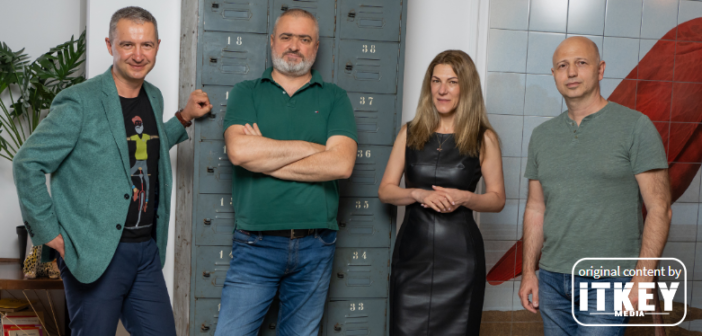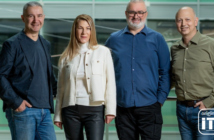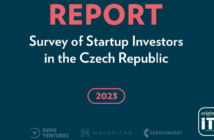- Bucharest-based crowd investment platform SeedBlink opens secondary market of its portfolio startups’ shares for individual investors
- The secondary market deals don’t require minimum ticket size or VC participation, and the platform handles the transactions
- This gives liquidity to an otherwise illiquid asset class, and stimulates the investment activity
- SeedBlink plans include further EU-wide expansion to grant its accessibility to more investors across Europe
Earlier this month, the famous Romanian-born co-investment platform SeedBlink announced the launch of its secondary market to individual investors. This signifies SeedBlink’s further effort in democratizing VC investments. It was made possible by the ECSPR license that SeedBlink obtained last November.
What Has Changed
Previously, individual investors only had access to the primary market, i.e. when the startup was raising a new round of investment. This was bound with two limitations:
- There had to be a minimum ticket size for participation. SeedBlink set it at EUR 2.5K.
- In order for the round to be completed, there had to be a pre-committed amount from VCs covering the significant part of the planned round. And the rest was up to individual investors.

Adriana Iordan, Chief Product and Marketing Officer at SeedBlink
Since the secondary market doesn’t deal with new rounds of investment, but rather adds the liquidity to already purchased shares, – both these limitations are removed. Instead, there is a minimum EUR 30 (or 3%) transaction fee for both buyers and sellers, and the transaction amount is negotiated between the parties. The transactions themselves are conducted by SeedBlink once every three months.
Interestingly, since the startup isn’t raising new capital, it has a limited say as to who can purchase its shares in the secondary market. The secondary market is mainly meant to benefit individual investors – namely, to offer early liquidity of startups’ shares, an otherwise illiquid asset class. This way, they can free up capital and invest at various risk profiles and take part in projects they might have missed on the primary market. However, the investor needs to be a verified SeedBlink member to participate in such deals.
How It Works

Andrei Dudoiu, Managing Partner at SeedBlink
‘The secondary market was built to be outside the startups efforts, and SeedBlink’s team handles all the processes end-to-end to make it as easy as possible for all founders involved. Also, companies can opt-in to have limited visibility on the bulletin board, which means that only shareholders in the present SPV(s) can see the offers and conclude transactions. Even when open to a broader community of verified investors, the asking price for the shares is not displayed anywhere but agreed upon by the parties engaging in the exchange privately,’ SeedBlink’s chief product and marketing officer Adriana Iordan tells ITKeyMedia.
‘Businesses available on the secondary are frequently in a later stage than those doing so through primary offerings, therefore they are typically better funded. Retail investors are now starting to have access to this type of investment opportunity,’ the platform’s managing partner Andrei Dudoiu adds.
Facilitated Cross-Border Deals
Looking at SeedBlink’s growing presence in various EU countries, it is apparent that the platform’s secondary market will facilitate cross-border deals on the pan-European level, which remains a challenge today.
‘The EU is not a common market – in practice, it is a tariff-free trade zone with 27 different sets of rules for taxation and business activity (although some laws are standardized at the European level, such as GDPR or ECSPR),’ SeedBlink’s managing partner Ionuț Pătrăhău points out.
More Financial Security for Tech Startups in the EU

Ionut Patrahau, Managing Director and Corporate Development at SeedBlink
In the long-run, the liquidity that the secondary market offers should ultimately make the EU more attractive for tech startups to stay instead of getting swayed by more beneficial terms in the US or China. In other words, tech startups can rely on local funding more securely.
According to Mr Pătrăhău, the biggest drawback about raising money in Europe is that most European countries, outside of tech hubs like London, Amsterdam, Paris or Berlin, do not have mature venture capital markets. In the majority of European markets, it is possible to raise pre-seed and seed capital, but there is a lack of series A funds and growth stage capital.
‘For example, despite having an outsized number of unicorn startups for such a small country, Portugal got its first series A fund last year in 2021. The successful Portuguese startups like Outsystems and Unbabel all moved their companies abroad, usually to the US, in order to raise growth stage capital,’ Mr Pătrăhău states.
The way he sees it is that supporting EU startups in their early stages and later losing them at more mature phases equals simply pouring money in the US. EU investors take the bigger risk as US investors take the bigger returns.
The US investors, in turn, only invest in US-registered companies (and more specifically, usually only Delaware corporations) for two main reasons:
- they more familiar with Delaware corporations and have the know-how to diligence the company’s corporate structure and finances;
- in some cases, the funds are precluded from investing in overseas entities for tax reasons.
After the growth stage often comes an M&A, and the US also offers more convenience in this regard. Most potential acquirers will find it way easier to diligence and complete the acquisition process for a US registered company than the one registered in Europe.
The Global Perspective

Radu Georgescu, Chaiman of the Advisory Board at SeedBlink
SeedBlink’s chairman of the advisory board Radu Georgescu offers an even broader view. According to him the world’s major powers engage in comprehensive global technology politics. The weaponization, mastering, and control of digital technologies is the new ‘Great Game’, and it shapes technological spheres of influence.
‘China is luring countries into technological dependencies to undermine their political sovereignty through its Digital Silk Road (DSR) initiative. Meanwhile, the United States tries to offset Chinese and Russian influence, seeks to maintain its cutting-edge advantage on military AI and other technologies, and backs and protects the interests of its major technology companies globally. It also denies other nations access to key technologies, monitors critical investments in the technology sector to avoid security risks, seeks to secure and control critical supply chains (especially of semiconductors), and imposes export controls and even embargoes on sensitive technologies,’ Mr Georgescu shares.
As for the European Union, it tries to shape global standards for privacy and data protection, digital platforms, and AI according to European values using the attractiveness and power of its internal market. In 2021, the EU also announced its ‘Global Gateway’ initiative that promotes digital partnerships with like-minded countries and allies. The EU’s ‘Global Gateway’ is supposed to serve as a counterweight to the Chinese DSR.
‘This is the time for Europe to start to ‘own’ technologies and make a difference in an array of verticals,’ Mr Georgescu is convinced. In line with this cause, SeedBlink – as a EU-level tech co-investment platform – makes its contribution by making startup shares liquid and more accessible to individual investors in Europe. The company also benefits from having offices in various EU countries and plans to set up more, but promises to share more details when the time is right.

Kostiantyn is a freelance writer from Crimea but based in Lviv. He loves writing about IT and high tech because those topics are always upbeat and he’s an inherent optimist!





